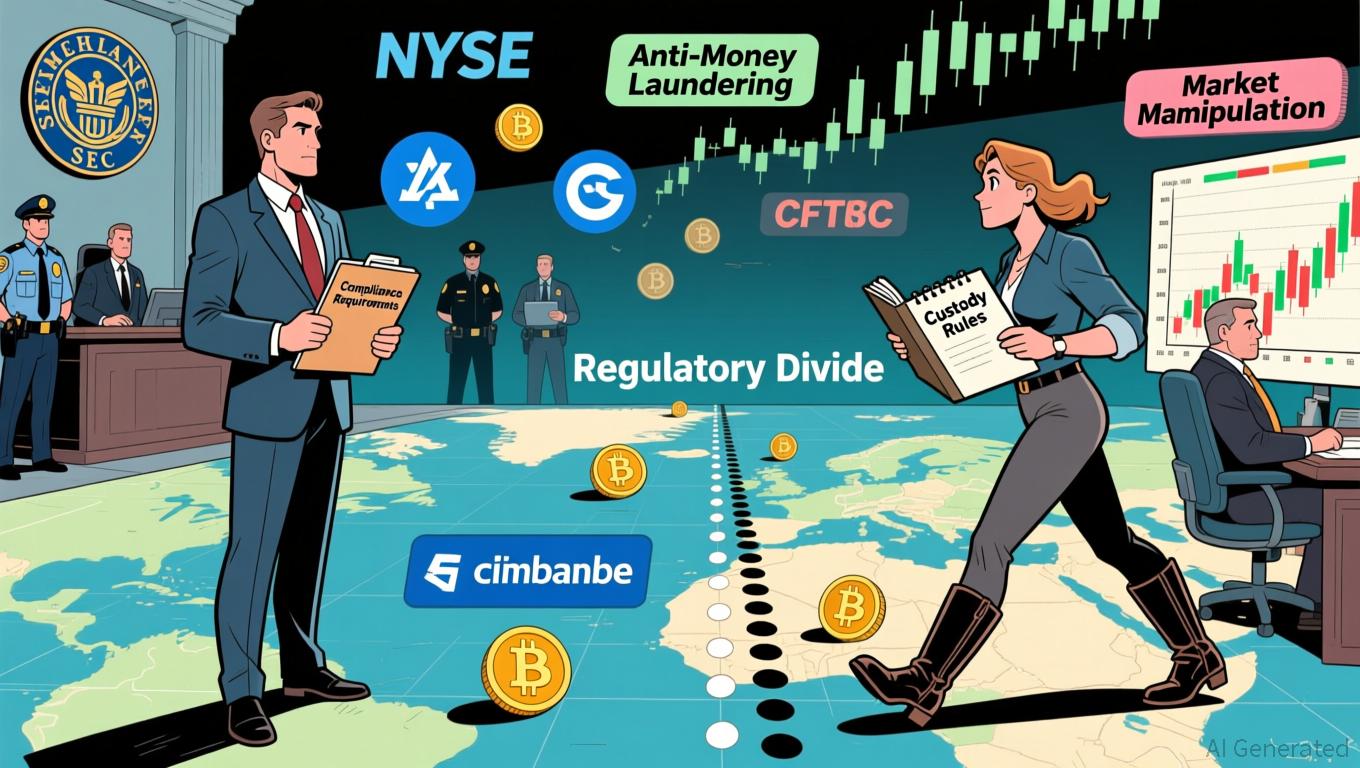Bitcoin Updates: Lawmakers Seek Solution to Ongoing SEC and CFTC Dispute Over Crypto Oversight
- U.S. Congress proposes two crypto regulatory frameworks: CFTC-led commodity model vs. SEC's "ancillary asset" approach, creating dual oversight challenges for exchanges. - Emerging projects like BlockDAG ($435M presale) and privacy coins gain traction amid market rebound, emphasizing utility over speculation post-government shutdown. - Bitcoin exceeds $102,000 with ETF inflows and Ethereum sees whale accumulation, though profit-taking risks and regulatory delays remain key headwinds. - Senate drafts and
The regulatory environment for cryptocurrencies in the United States is at a turning point as lawmakers work to resolve the ongoing jurisdictional dispute between the Securities and Exchange Commission (SEC) and the Commodity Futures Trading Commission (CFTC). Two rival Senate proposals—the Agriculture Committee’s CFTC-led structure and the Banking Committee’s SEC-oriented “ancillary asset” approach—stand to significantly alter how digital assets are classified, how custody is managed, and how exchanges operate. These legislative efforts, along with renewed enthusiasm for new crypto ventures and
The Agriculture Committee’s proposal, spearheaded by Senators John Boozman and Cory Booker, would make the CFTC the main regulator for “digital commodities” and their spot trading platforms. This model draws from established commodity oversight, mandating that exchanges, brokers, and dealers register with the CFTC and comply with rigorous standards for capital and asset custody. While

Market sentiment has improved recently after the conclusion of the 43-day U.S. government shutdown, which had previously dampened risk appetite.
Technical analysis points to ongoing
For those investing in crypto, the balance between regulatory developments, technological progress, and market cycles is becoming ever more important. While the Senate’s proposals are still under debate, the rapid progress of blockchain projects and the durability of privacy coins highlight the industry’s disruptive potential. As the 2025 market cycle unfolds, the ability to adapt to regulatory changes and seize new opportunities may be just as crucial as any on-chain metric.
Disclaimer: The content of this article solely reflects the author's opinion and does not represent the platform in any capacity. This article is not intended to serve as a reference for making investment decisions.
You may also like
61% of institutions plan to boost crypto exposure despite October crash: Sygnum

US shutdown ends, crypto progress resumes as Trump signs bill

Tokenized uranium opens up access for everyone, blending decentralized finance with the shift toward sustainable energy.
- Uranium.io won Best New Product for xU3O8, a tokenized uranium asset backed by regulated storage and traded via DeFi. - The xU3O8 token enables DeFi collateralization of physical uranium via Oku/Morpho, addressing a 42Mlb annual uranium supply-demand gap. - Institutional demand grows as 97% of investors seek simplified uranium access, aligning with U.S. $3.4B energy security investments. - This integration challenges traditional OTC markets by democratizing uranium investment through blockchain-based liq

KITE Price Forecast Post-Listing: Managing Market Fluctuations and Institutional Perspectives
- KITE's 2025 IPO details remain unconfirmed, with Black Kite's AI risk framework and Kite Hill's event communications shaping potential investor sentiment. - Black Kite's unified AI risk model could attract compliance-focused investors but faces adoption and regulatory uncertainties. - Kite Hill's hybrid tech-creative events offer diversification but risk volatility due to macroeconomic shifts and corporate spending trends. - Institutional investors may support Black Kite's ESG alignment yet hesitate over
